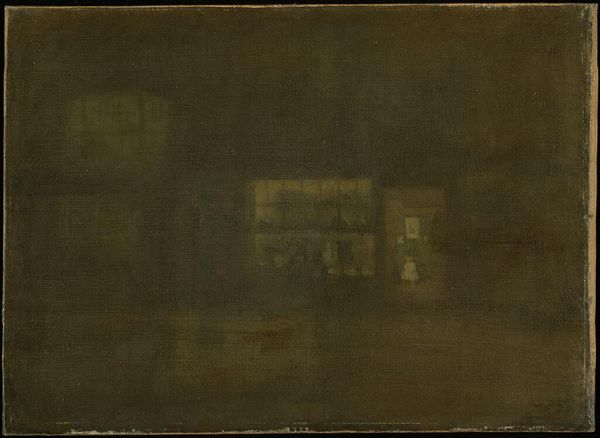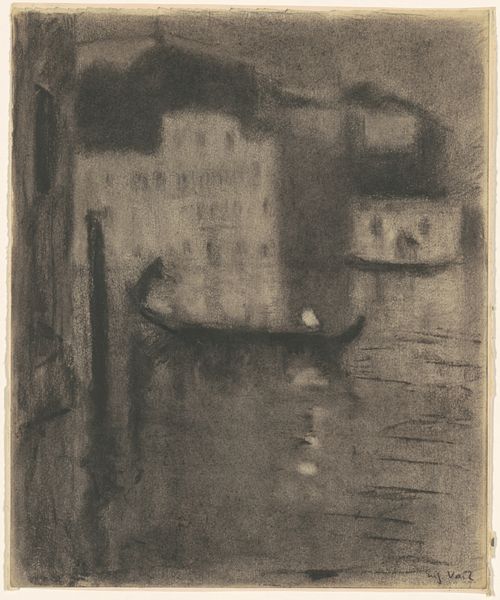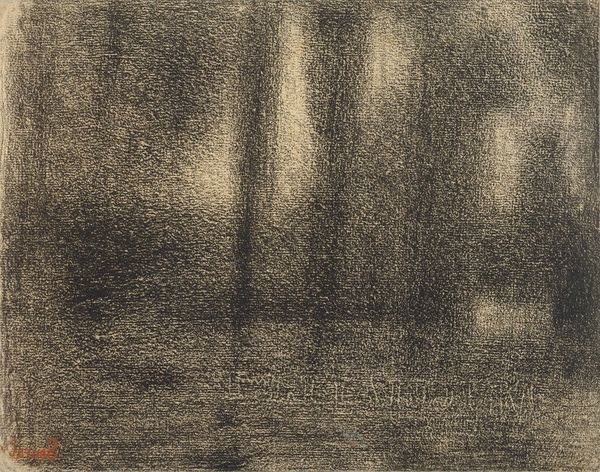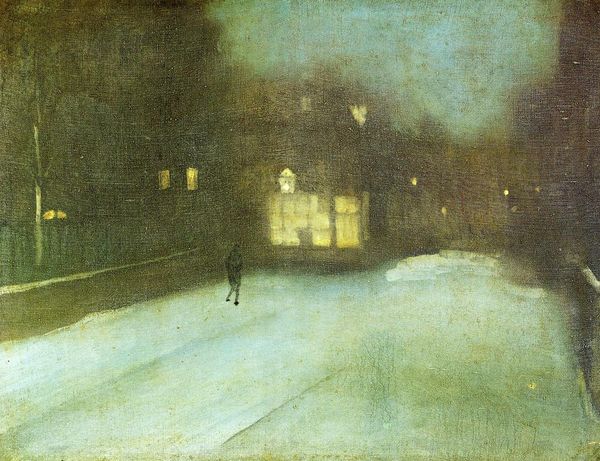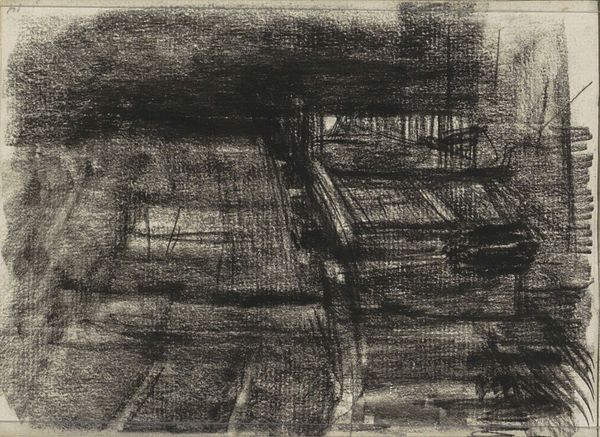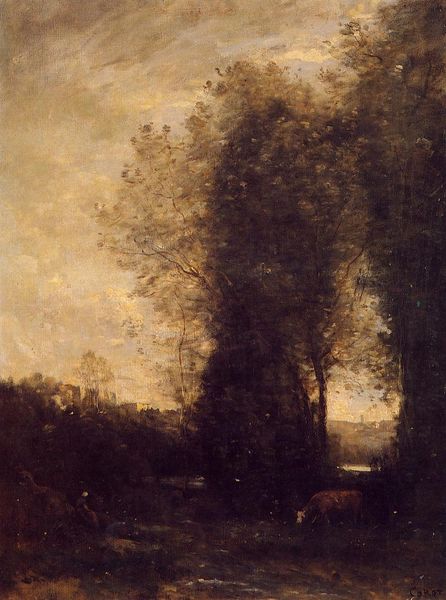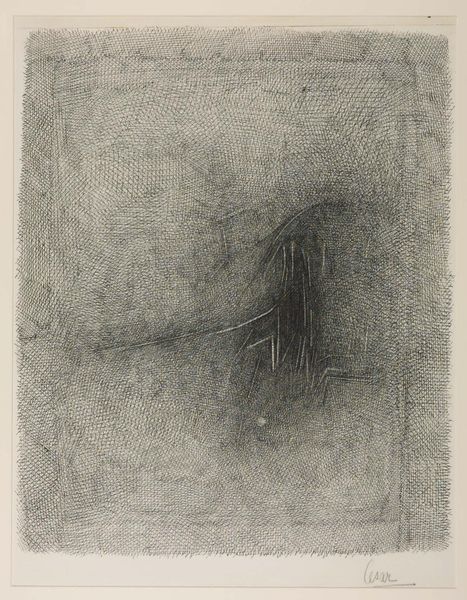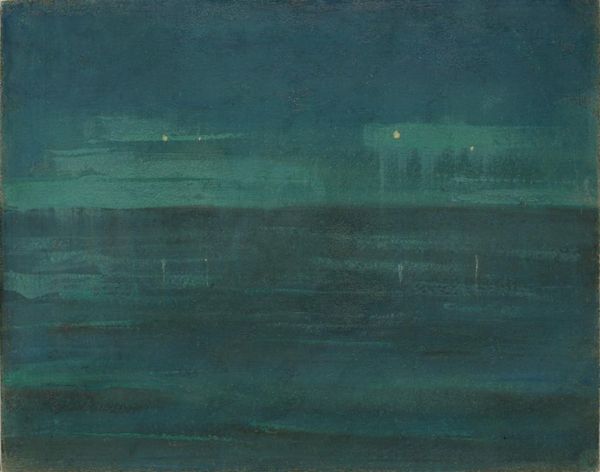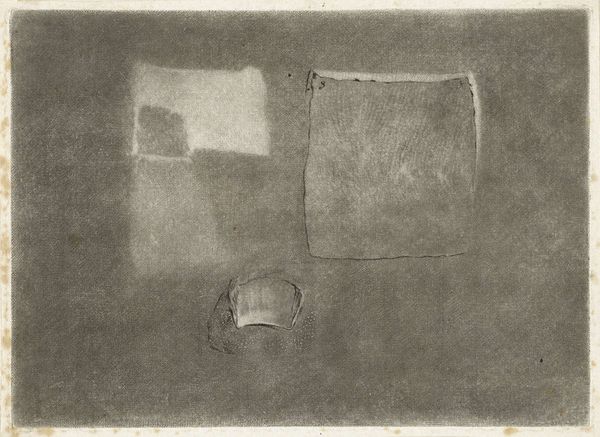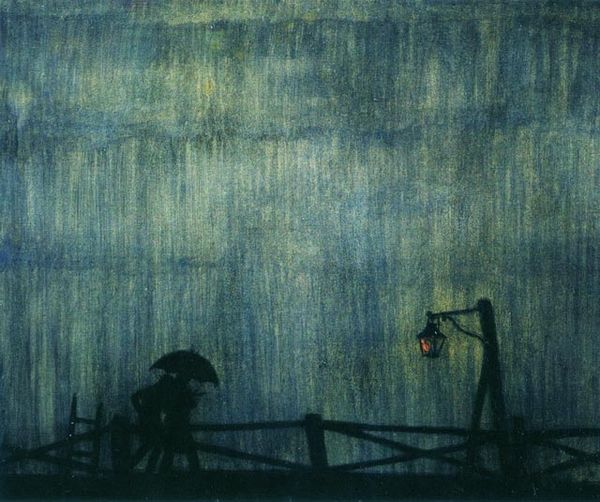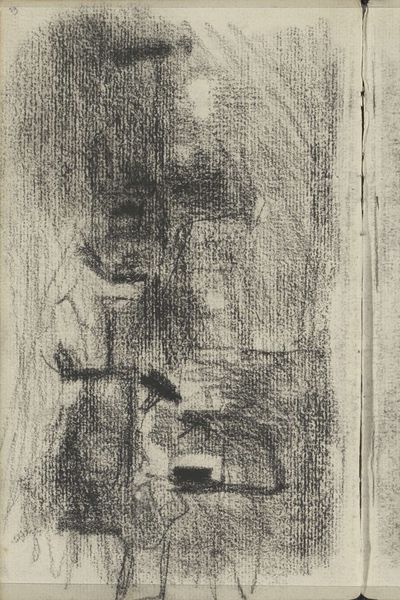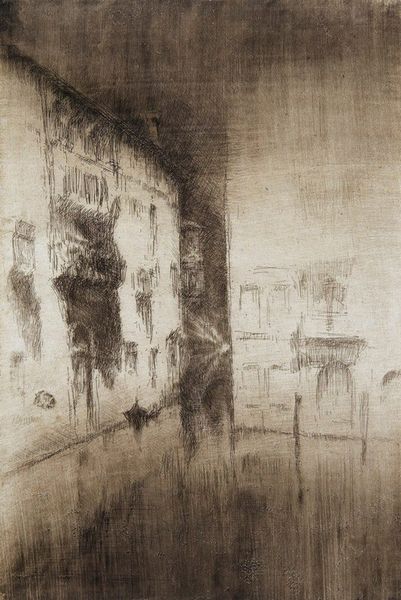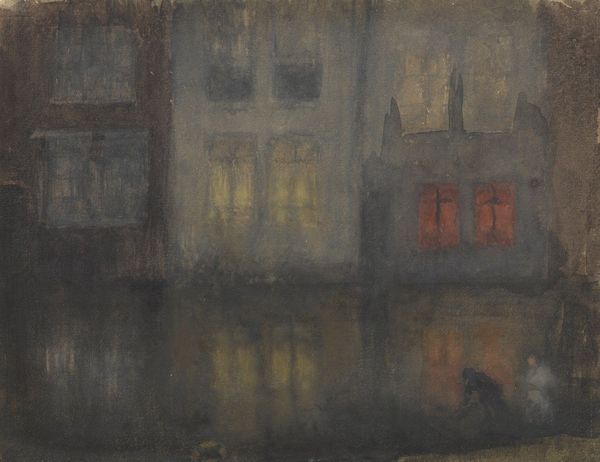
Dimensions: 36.2 x 50.8 cm
Copyright: Public domain
Editor: This is "Nocturne Black and Gold – The Rag Shop, Chelsea," an oil painting by James Abbott McNeill Whistler, dating from 1878. The painting strikes me as a study in tonal value, dominated by an almost monochromatic palette. It's very subtle; the forms are barely distinguishable from the ground. How do you interpret this work? Curator: Indeed. Focus on Whistler's radical simplification of form and color. He prioritized the overall arrangement of tones and shapes rather than realistic representation. Observe how the composition is divided into horizontal bands, and how the artist’s brushstrokes barely describe any concrete reality. The ‘rag shop’ becomes simply a collection of light. Is this landscape, or rather a suggestion of one? Editor: So, it's about the aesthetic experience, the visual harmony, more than the subject matter? Curator: Precisely. It's crucial to view Whistler's Nocturnes through a Formalist lens. Think about the picture plane; Whistler explores abstract aesthetic arrangements, disrupting traditional notions of depth and perspective, effectively flattening the space. How does this impact your understanding of the 'scene'? Editor: It's like he’s trying to find the essence of a fleeting moment in the city. But why use such muted colors? Curator: The limited palette allows Whistler to foreground subtle variations in tone. He is searching for pure visual sensation, prioritizing atmosphere and mood. Whistler's title emphasizes "black and gold." Notice where, in the canvas, do these shades find purchase? Where and how is our vision alerted by them? Editor: It does draw you in. It feels less like looking *at* a place and more like experiencing a feeling. Thanks. That's helpful! Curator: Understanding the formalism empowers our observation and reveals Whistler's revolutionary approach to art. My pleasure.
Comments
No comments
Be the first to comment and join the conversation on the ultimate creative platform.
